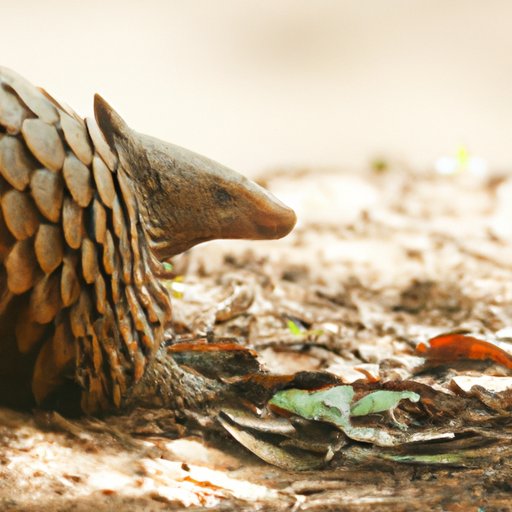Introduction
Pangolins are incredibly unique animals, with their scaly armor-like covering and long snouts. They are found in parts of Africa and Asia, and have become an increasingly endangered species due to poaching and habitat destruction. It is estimated that there are less than 100,000 pangolins left in the wild today, but this number is rapidly decreasing. In this article, we will explore the remaining population of pangolins in the world and discuss how we can protect them from further endangerment.
Exploring the Declining Numbers of Pangolins Left in the World
The pangolin population has declined drastically over the last few decades due to a variety of factors. Poaching for their meat and scales, as well as habitat destruction, have had a significant impact on the number of pangolins left in the world. In addition, illegal trafficking of pangolins has also contributed to their dwindling numbers. As a result, pangolins are now considered endangered species in many parts of the world.
Despite the declining numbers of pangolins, they are still found in parts of Africa and Asia. In Africa, pangolins are found in countries such as Nigeria, Cameroon, Gabon, and Congo. In Asia, they are found in India, China, Vietnam, and Indonesia. However, the population of pangolins in these areas is quickly diminishing due to poaching, habitat destruction, and illegal trade.
How Can We Save the Remaining Pangolins?
In order to protect the remaining pangolin population, there are several steps that need to be taken. Conservation efforts must be implemented, both in Africa and in Asia, to ensure that the pangolins’ habitats are protected from destruction. Education and awareness campaigns should also be launched to inform people about the plight of the pangolin and to raise awareness of the importance of protecting them. Finally, stricter regulations on the international trade and poaching of pangolins should be put in place.

Understanding the Impact of Poaching on the Pangolin Population
Poaching is one of the biggest threats to the remaining pangolin population. Poachers target pangolins for their meat and scales, which are then sold on the black market. The extent of the problem is difficult to measure, as poachers often operate in remote areas and are difficult to track. Furthermore, illegal trafficking of pangolins is rampant, making it even more difficult to combat.
In order to address the problem of poaching, governments must implement stricter laws and regulations on the sale and possession of pangolin products. In addition, law enforcement must be strengthened to ensure that poachers are caught and prosecuted. Finally, education and awareness campaigns should be carried out to educate people about the consequences of poaching and to discourage people from participating in such activities.

A Closer Look at the Endangered Status of Pangolins
The International Union for Conservation of Nature (IUCN) has classified pangolins as an endangered species. This means that pangolins are at risk of becoming extinct in the near future if their populations continue to decline. In order to protect pangolins, international agreements and legislation must be put in place. Additionally, reintroduction programs should be launched in areas where pangolins were once abundant but have since vanished.
Conclusion
The pangolin population is rapidly declining due to poaching, habitat destruction, and illegal trafficking. In order to protect the remaining pangolins, conservation efforts must be implemented, education and awareness campaigns must be launched, and strict regulations on the international trade and poaching of pangolins must be put in place. International agreements and legislation must also be established in order to protect pangolins from becoming extinct. With concerted effort and dedication, it is possible to save the remaining pangolins and help them thrive in the wild.


